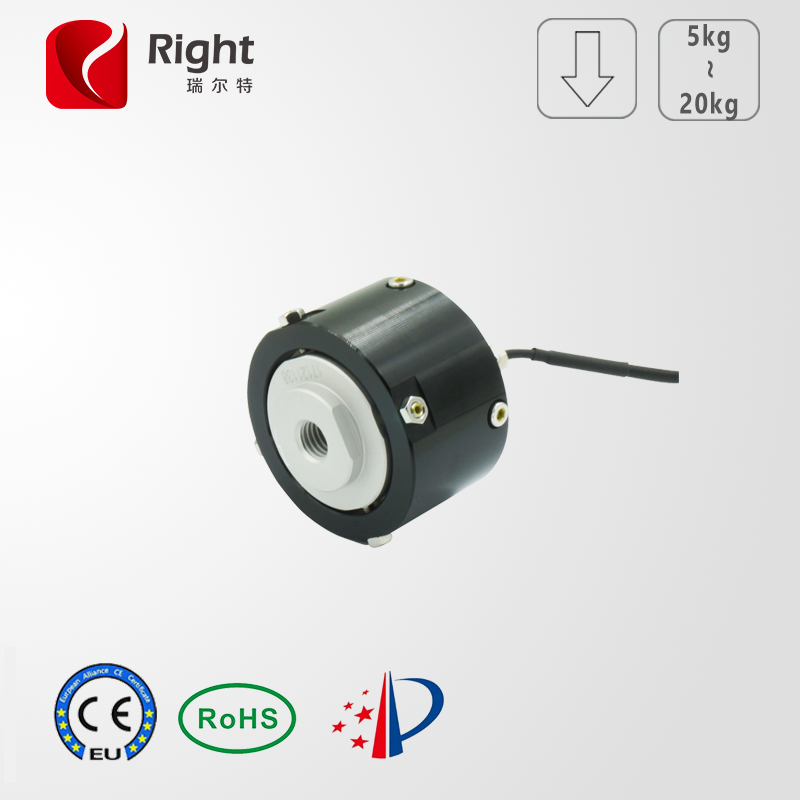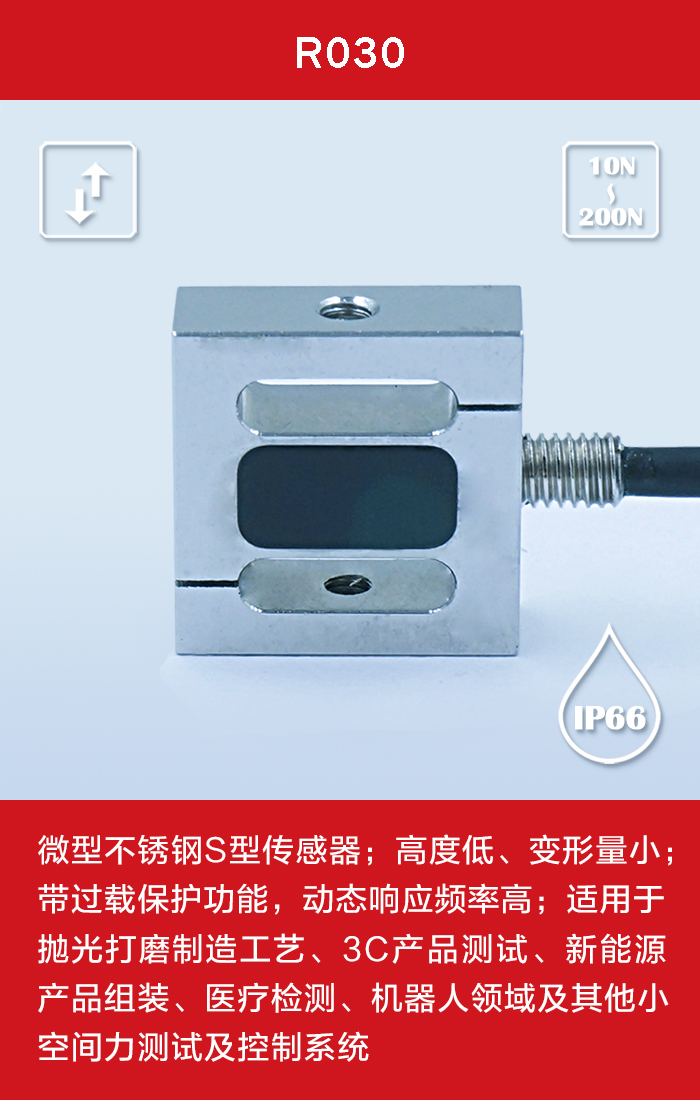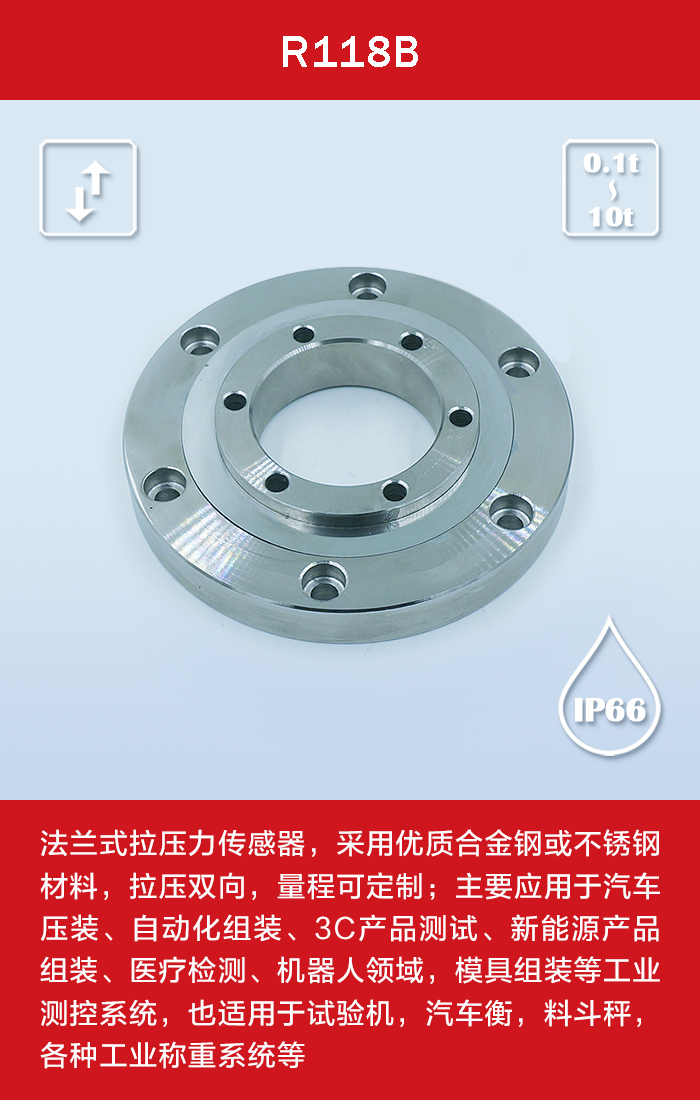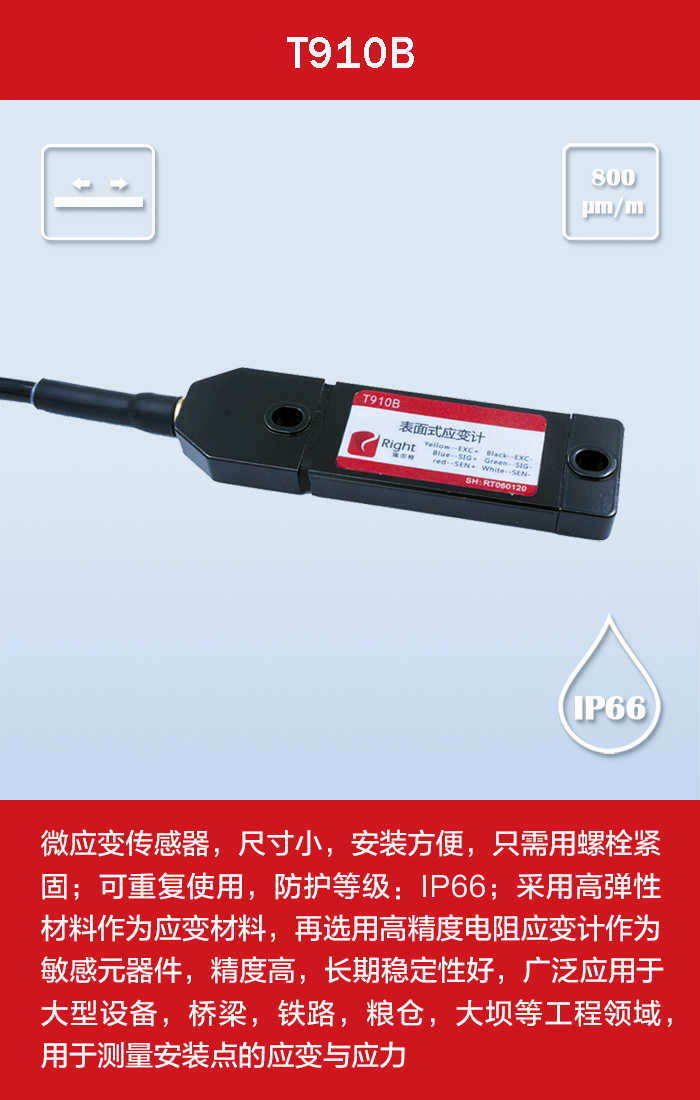NEWS
Focus on Right, share the wonderful moments of enterprises and exhibitions, popularize product technical knowledge, and answer frequently asked questions
News Center
Six-dimensional force sensors for industrial grinding and assembly robots
- Categories:Technical knowledge
- Time of issue:2020-04-27 10:44
(Summary description)The six-dimensional force sensor, which is fixedly connected to the end joint of the robotic arm by a sensor mount. Under static conditions, the force and moment data measured by the six-dimensional force sensor on the mechanical wrist consists of three components: the sensor's own system error, the load's gravitational effect, and the external contact force applied to the load. In industrial robot applications such as machining and assembly, the contact force between the robot end tool or workpiece and the external environment needs to be accurately sensed, and the control system modifies the robot's motion accordingly in order to ensure the flexibility of the operation.
Six-dimensional force sensors for industrial grinding and assembly robots
(Summary description)The six-dimensional force sensor, which is fixedly connected to the end joint of the robotic arm by a sensor mount. Under static conditions, the force and moment data measured by the six-dimensional force sensor on the mechanical wrist consists of three components: the sensor's own system error, the load's gravitational effect, and the external contact force applied to the load. In industrial robot applications such as machining and assembly, the contact force between the robot end tool or workpiece and the external environment needs to be accurately sensed, and the control system modifies the robot's motion accordingly in order to ensure the flexibility of the operation.
- Categories:Technical knowledge
- Time of issue:2020-04-27 10:44
- Views:
Principle and design of six-dimensional force sensors
Each force corresponds to a vector with both magnitude and direction One-dimensional force transducer: only the force magnitude is known One-dimensional force transducer: both forces appear to be 5N Six-dimensional force/moment transducer Six-dimensional force transducer Three-dimensional space: the force and moment on each axis need to be known Six-dimensional force transducer structure 3 vertically supported six-dimensional force transducer 4 vertically supported six-dimensional force transducer Cylindrical six-dimensional force transducer Double-ring six-dimensional force transducer Cross-forked six-dimensional force transducer 8 Vertically supported six-dimensional force transducer Structure of six-dimensional force transducer Non-radial three-beam six-dimensional force transducer T-bar six-dimensional force transducer Invention of six-dimensional force transducer by Gao et al. Stewart Force transducer prototype Six-dimensional force/moment transducer by Dwarakanath et al. Six-dimensional force/moment transducer by Nguyen Kang's six-dimensional force/torque sensor Rigidity, compactness, high load carrying capacity, no cumulative error, high accuracy, simple inverse solution, conventional Stewart force transducer, conventional Stewart force transducer, large joint friction torque, mechanical gap and hysteresis, difficult to make all preloads uniform. The structural analysis of the conventional preloader with a ball joint greatly reduces the influence of the joint friction torque and reduces the mechanical hysteresis. Double preload force transducer with 7 branches Double preload force transducer (1) force measuring platform; (2) preload platform; (3) measuring branch; (4) ball socket; (5) lower platform; (6) ball socket; (7) preload bolt; (8) base 8 branches upper and lower preload force transducer (1) force measuring platform; (2) preload platform; (3) measuring branch; (4) ball socket; (5) preload bolt; (6) base ) Base 8-branch left and right preload force transducer (1) force measuring platform; (2) left preload platform; (3) measuring branch; (4) right preload platform; (5) preload bolt. Experimental study Force sensor prototype with intermediate preload branch Loading surface Standard single-dimensional force sensor Calibration system for a six-dimensional force sensor Single-dimensional force sensor Data acquisition and processing software Six-dimensional force sensor Load guide wheel Measurement error Force/moment component Measurement error Fx 0.2% Fy 0.4% Fz 1.3% Mx 0.1% My 1.1% Mz 0.4% Applications of six-dimensional force/moment sensors Mechanical End-of-arm sensors Haptics Microforce measurement Six-dimensional force/moment sensors have a wide range of applications, such as mechanical assembly, product testing, robotic material handling, haptics, microforce measurement, etc.

In the industrial grinding industry, the traditional workers grinding, there are poor workpiece consistency, high scrap rate, high labor costs, and the risk of dust explosion and other market pain points. In this regard, robots for people, has become the market just need.
Today, Changzhou Ruerte Measurement & Control Co., Ltd. introduces the application of six-dimensional force sensors in the field of industrial grinding and assembly robots. Let's take a look. Industrial grinding robots, six-dimensional force sensors belong to the force sensor. Force sensors are a class of tactile sensors that have a wide range of applications in robotics and mechatronics equipment. Force and torque sensors are used for the purpose of detecting forces within the device or interacting with the external environment, where force is a physical quantity that cannot be measured directly but can be measured indirectly through other physical quantities.
Force sensors can be used as transducers, such as strain gages, which provide a signal proportional to the deformation, i.e. the force acting on the contact point. Force sensors can detect external forces and torques applied to relevant parts of the robot, such as wrists and fingers, and can control wrist movement, servo control, and accurate completion of operations. As a newly developed sensor among force sensors, six-dimensional force sensors can simultaneously convert multidimensional force/moment signals into electrical signals, and can be used to monitor forces and moments with changing direction and magnitude, and measure acceleration or inertial forces, as well as detect the magnitude and point of action of contact forces.
Broadly speaking, six-dimensional force sensors can check three-dimensional orthogonal forces (fx, fy, fz) and three-dimensional orthogonal moments (mx, my, mz) in any force system in space. Due to their rich force measurement information and high measurement accuracy, they are mainly used in force and force-position control applications. Six-dimensional force/moment sensors provide force-sensing information for robot control and are important sensors for intelligent robots. Different types of six-dimensional force sensor structures, in the research of six-dimensional force sensors, the structural design of force-sensitive elements is the key core issue of force sensors, because the structure of force-sensitive elements determines the performance of force sensors. In this regard, many international and domestic scholars have carried out a lot of research work and proposed a variety of six-dimensional force sensor structures. The main application areas of six-dimensional force sensors in the industrial level are assembly and grinding, grinding is a very wide range of robot use of a field, the current market situation, for grinding high precision requirements of the industry is mainly 3C industry, and 3C industry labor-intensive, the urgent need to achieve automation transformation. In addition, the flexibility of the 3C industry requires more intelligent grinding robots to better meet the market demand.
The six-dimensional force sensor, which is fixedly connected to the end joint of the robot arm through the sensor mount. Under static conditions, the force and moment data measured by the six-dimensional force sensor on the mechanical wrist consists of three parts, namely, the sensor's own system error, the load's gravitational effect, and the external contact force applied to the load. In industrial robot applications such as machining and assembly, the contact force between the robot end tool or workpiece and the external environment needs to be accurately sensed, and the control system modifies the robot's motion accordingly in order to ensure the flexibility of the operation.
Scan the QR code to read on your phone
- Related Reading
Follow us for more information
-
 【 Official WeChat 】
【 Official WeChat 】
-
 【 Mobile Website 】
【 Mobile Website 】
Tel: 400-8067-299
- Service Hotline 400-8067-299
- Service Mailbox right@ritcl.com
- Pre-sales Advice 189 2107 0677
 Follow Right
Follow Right






